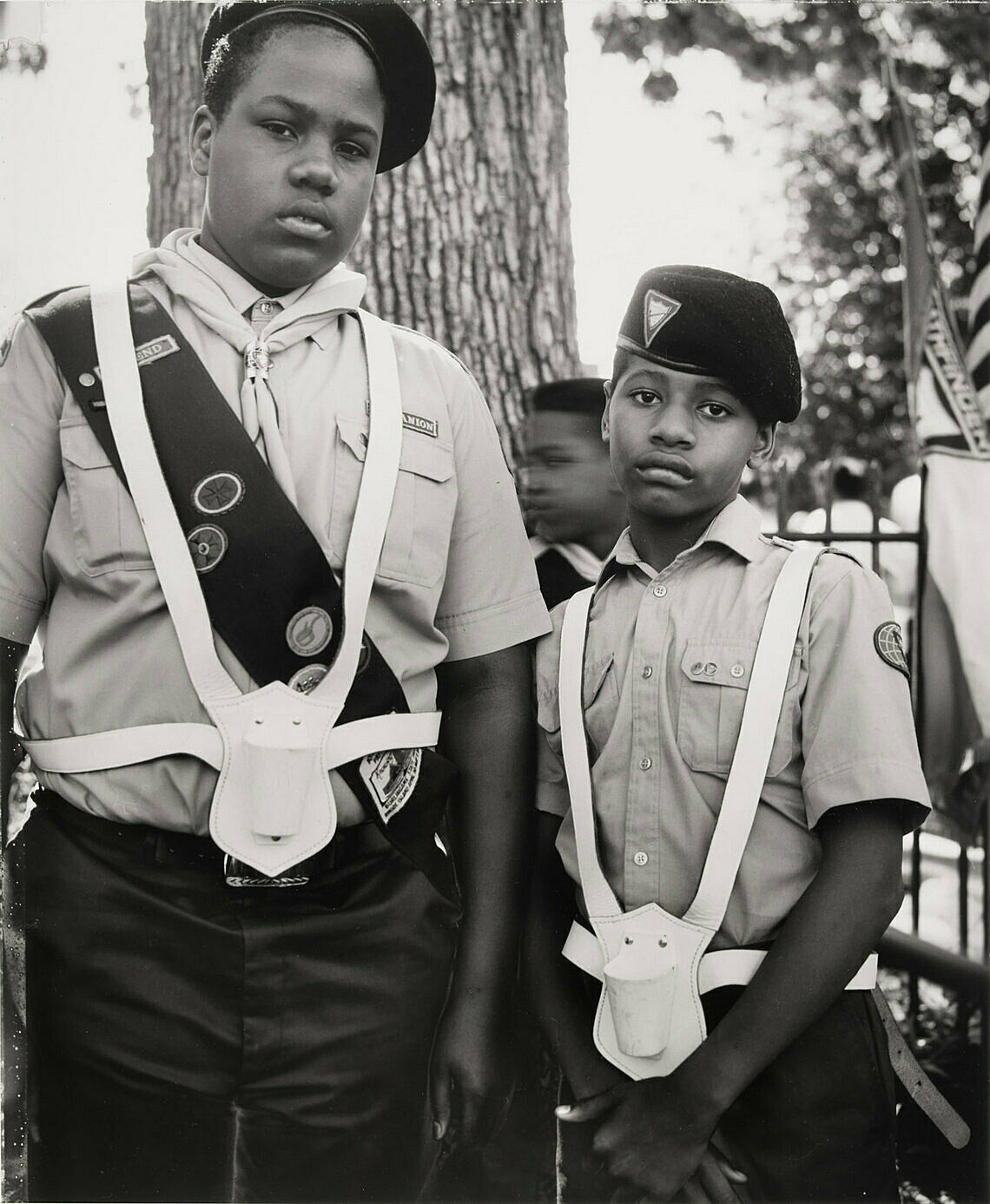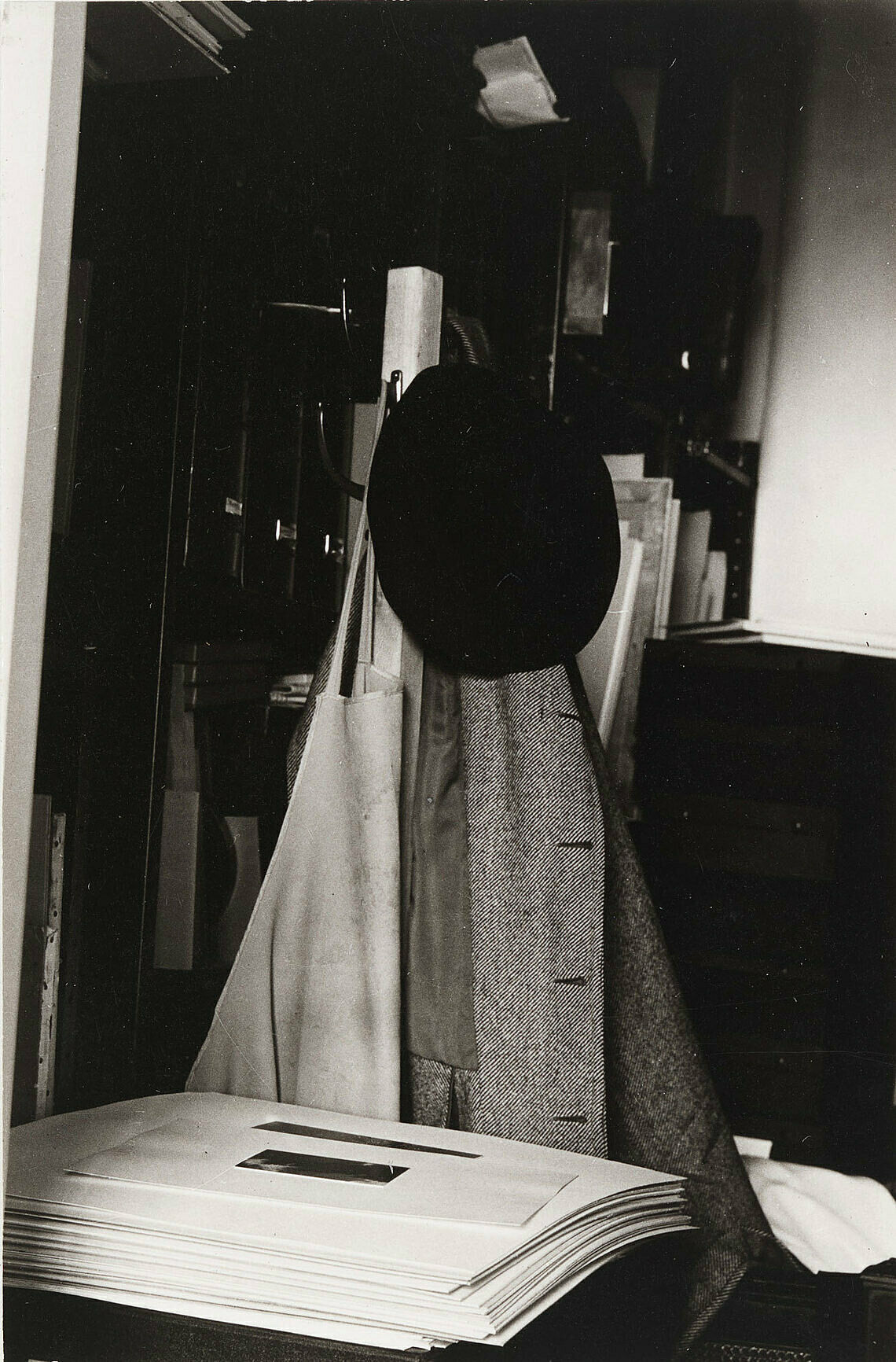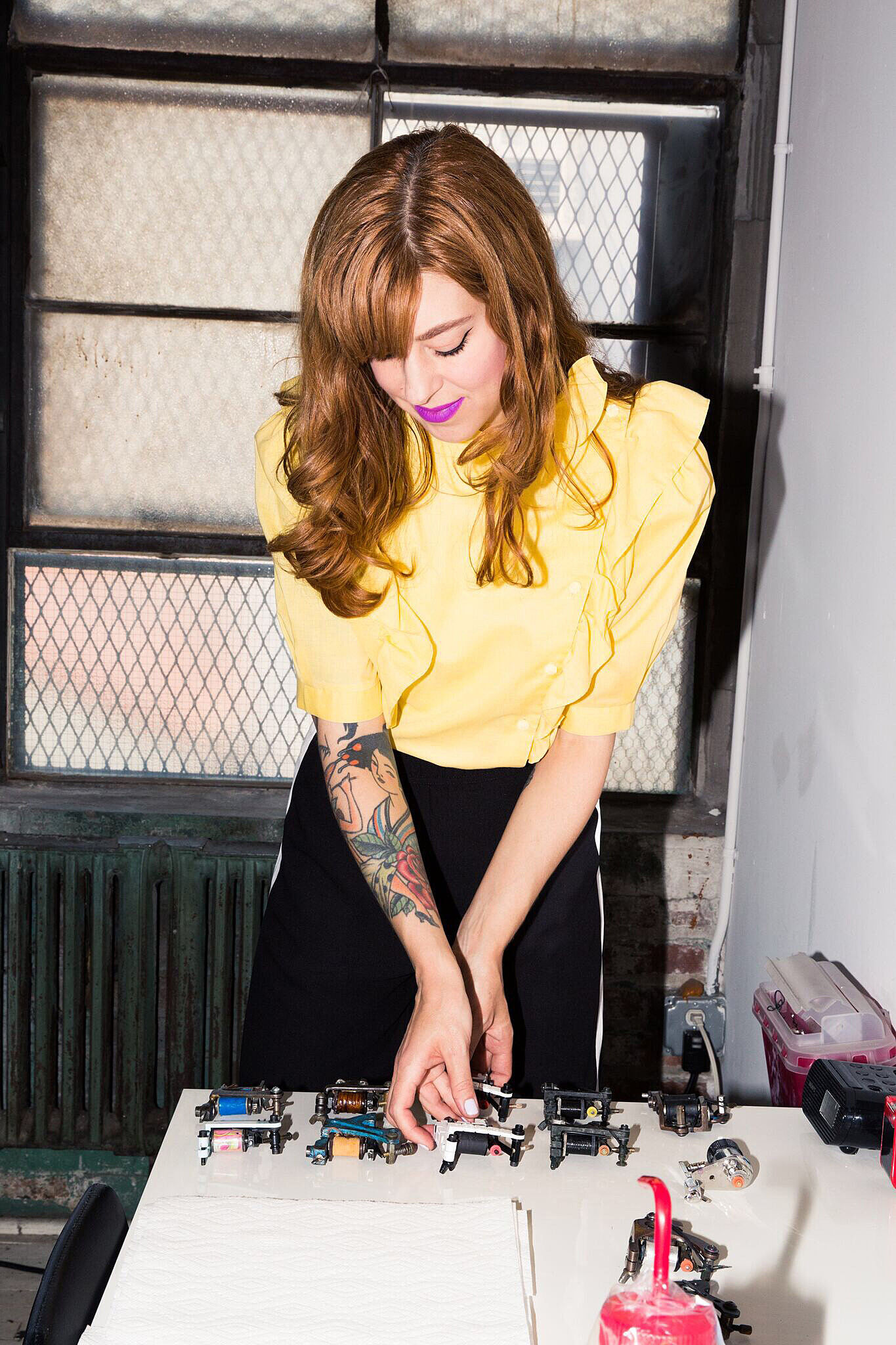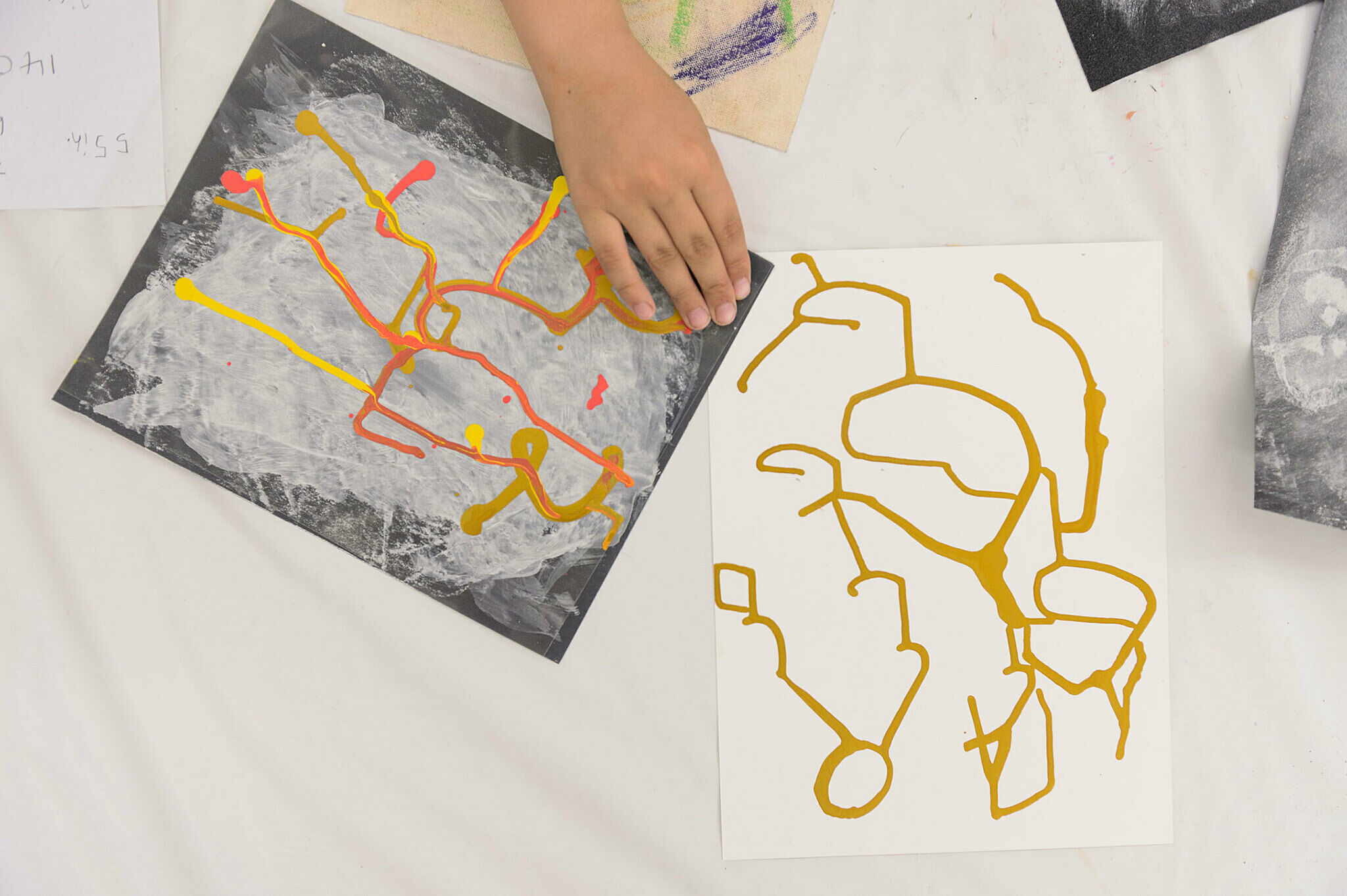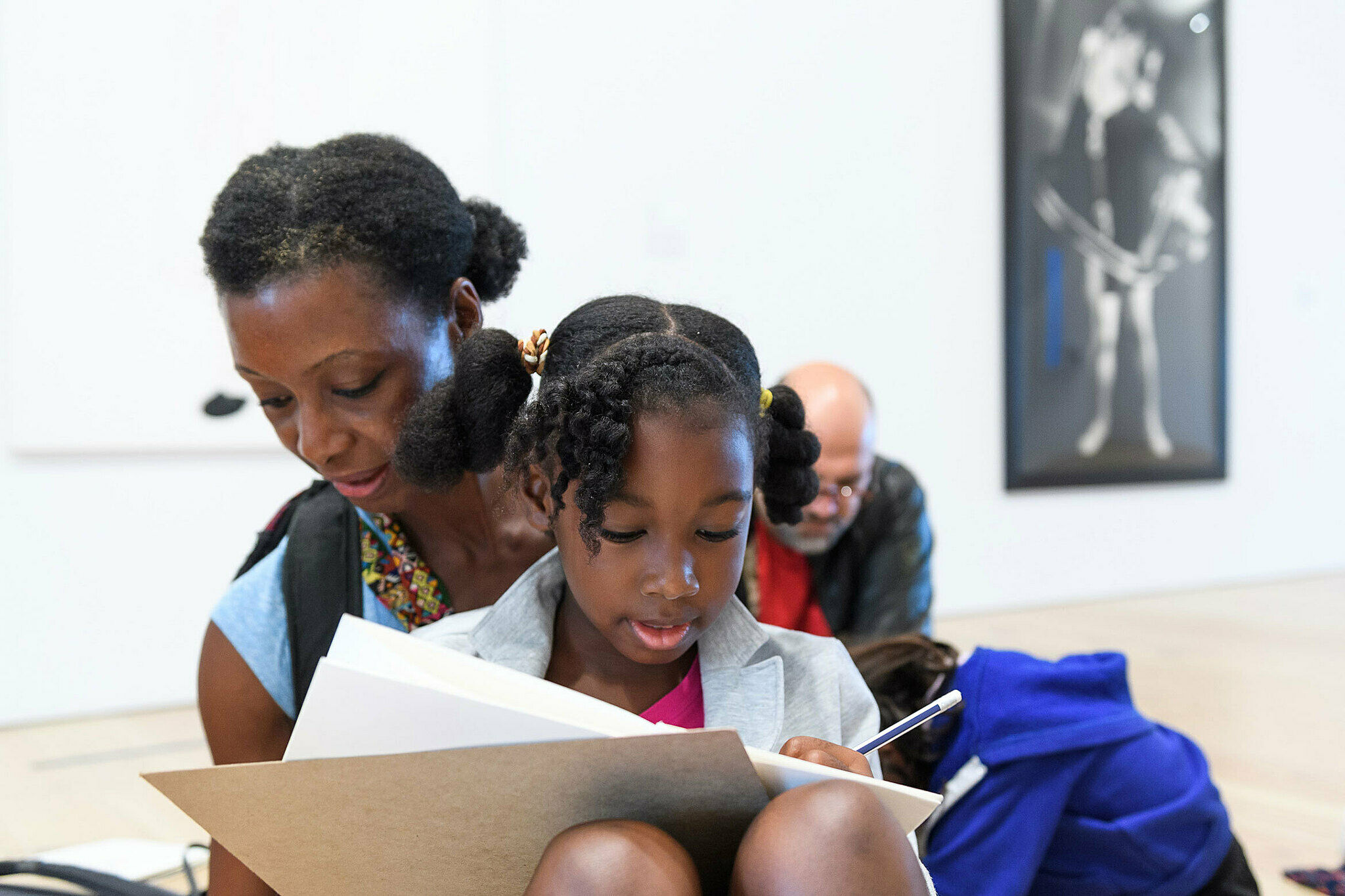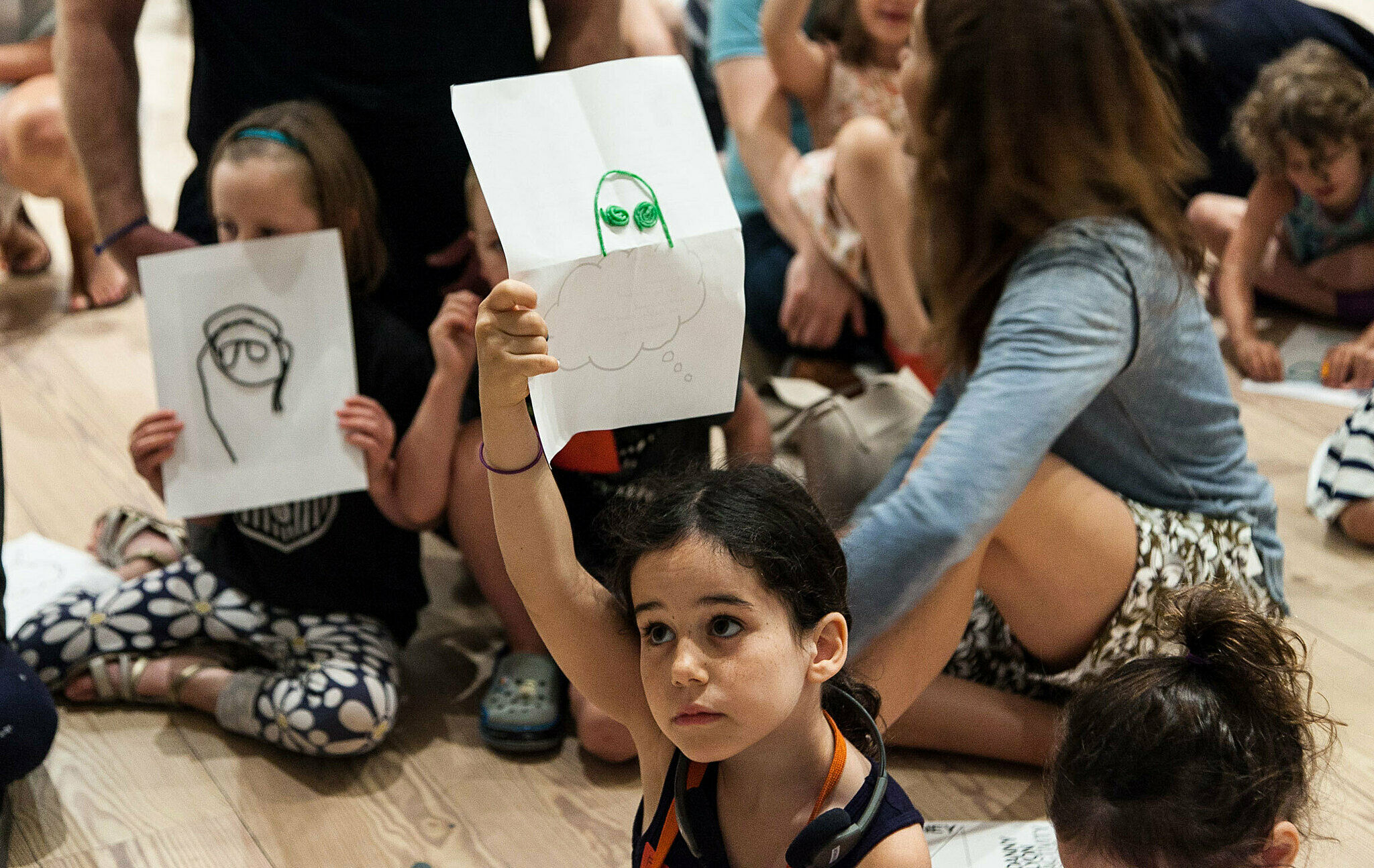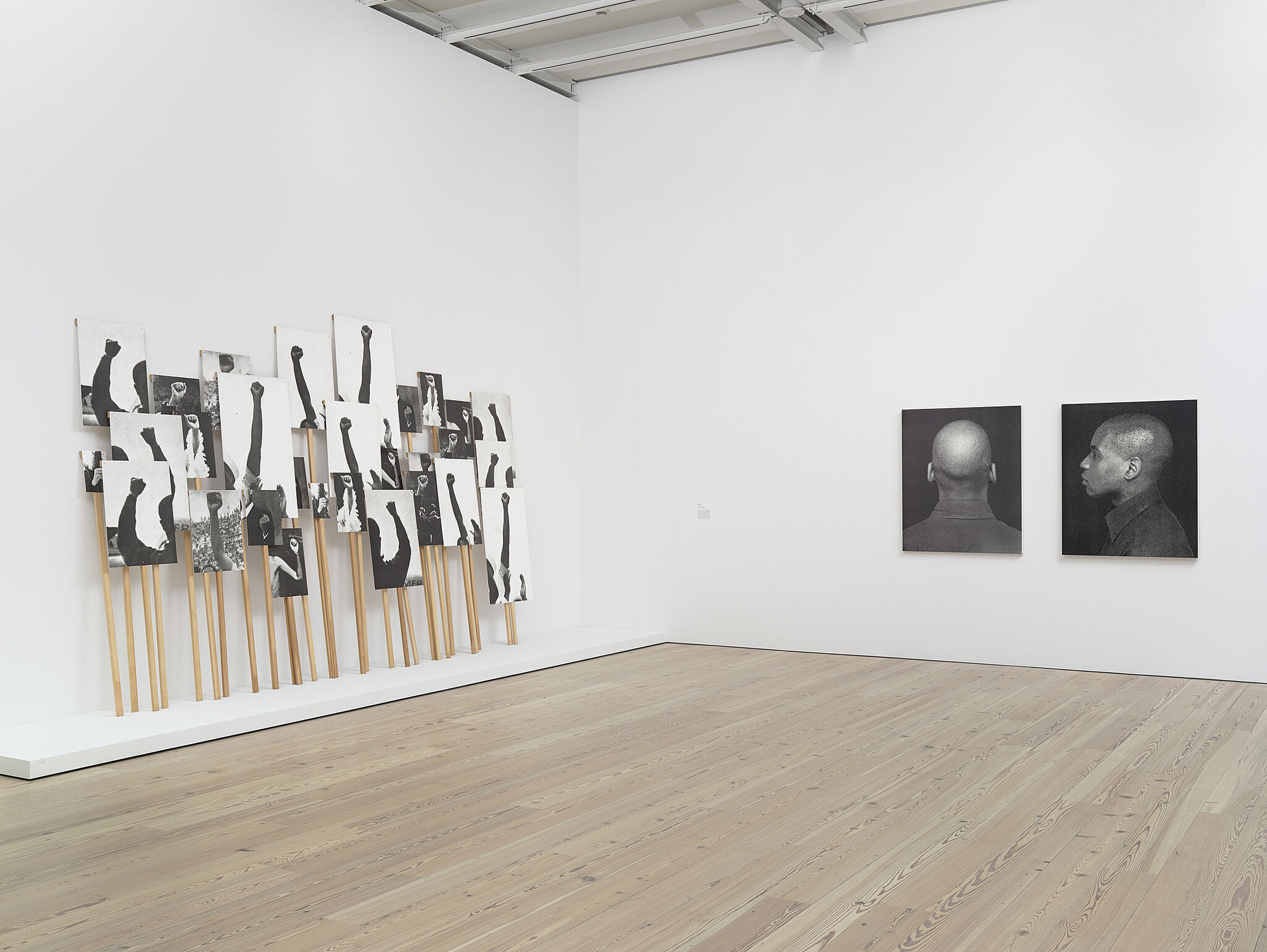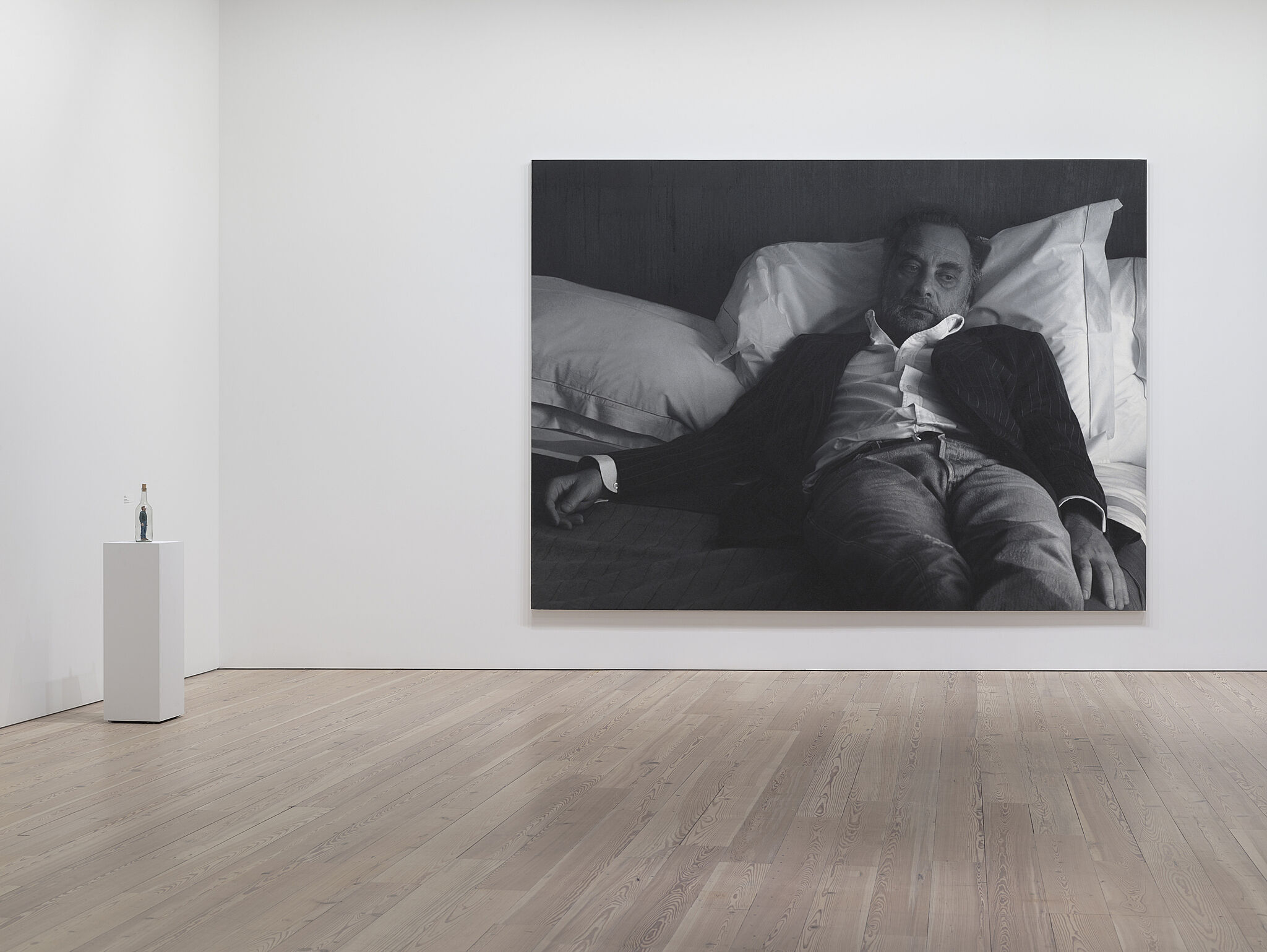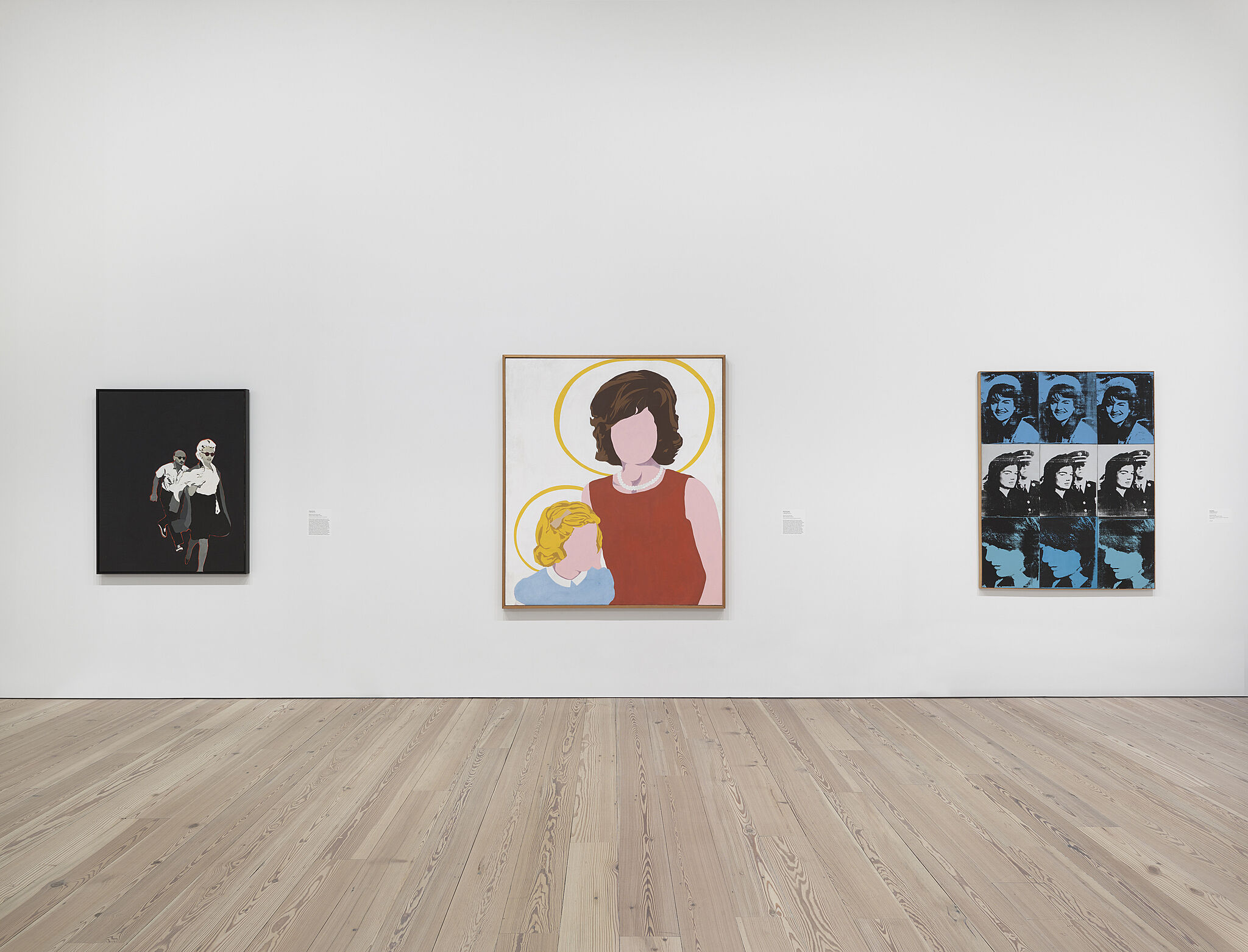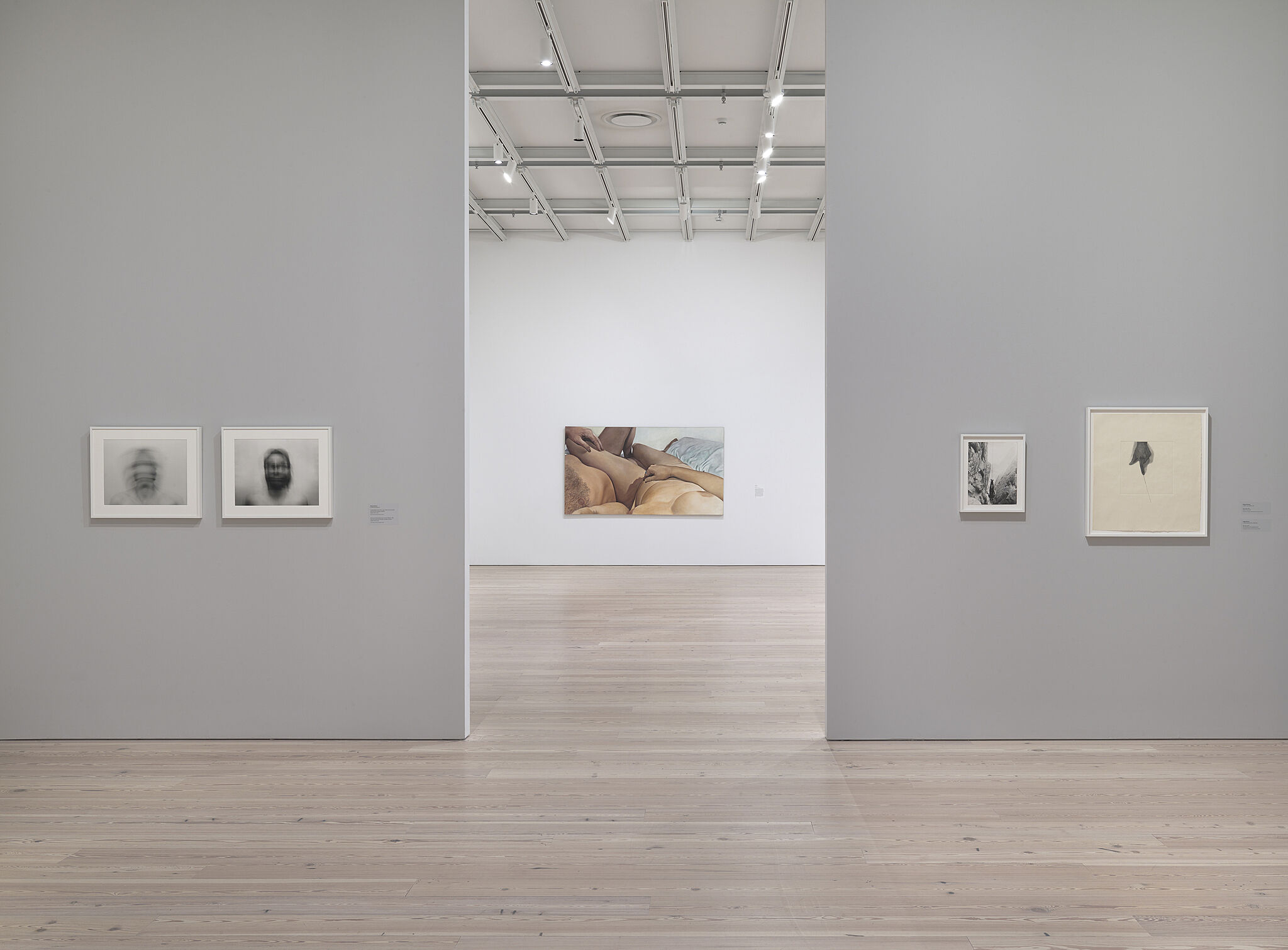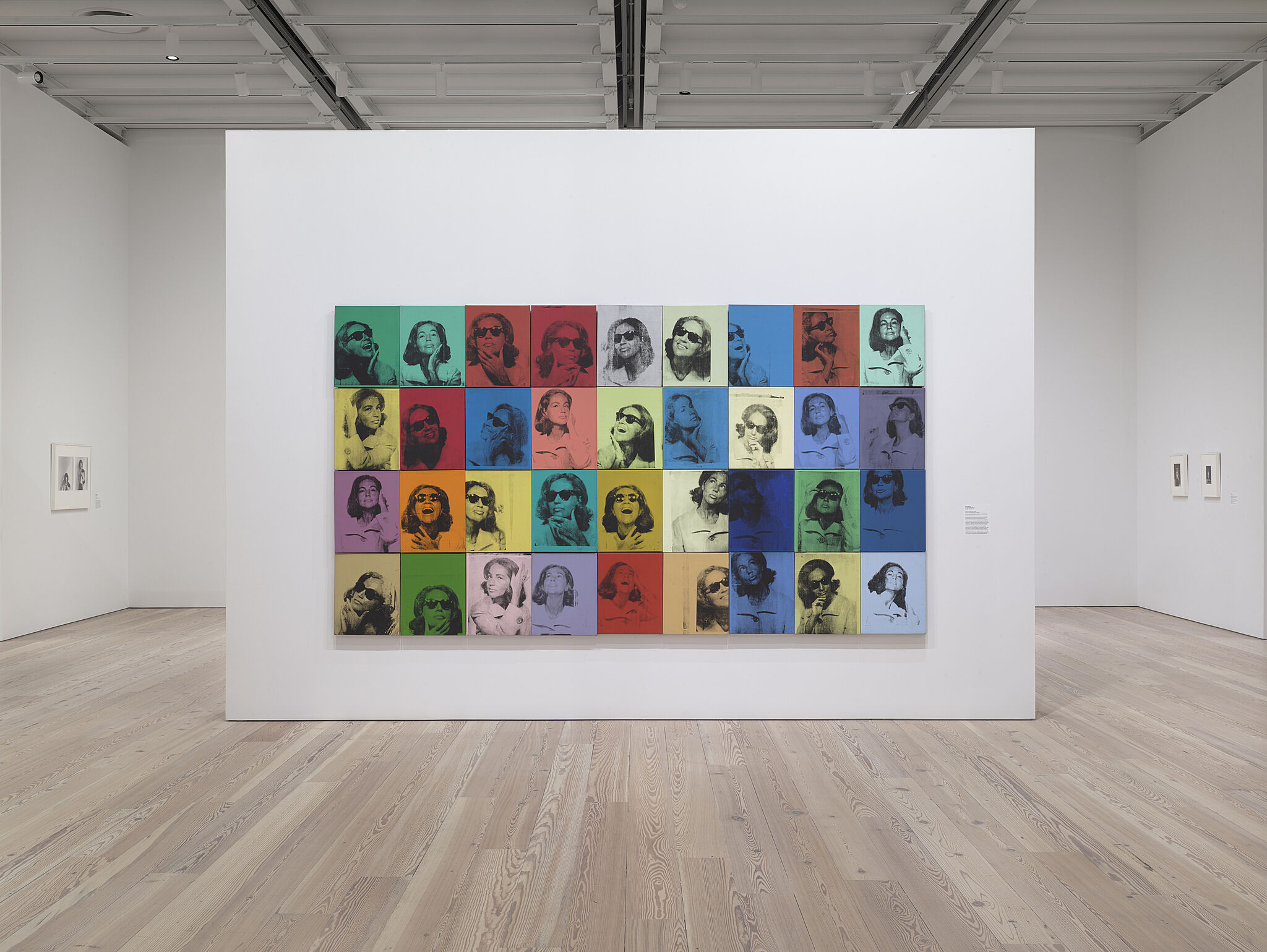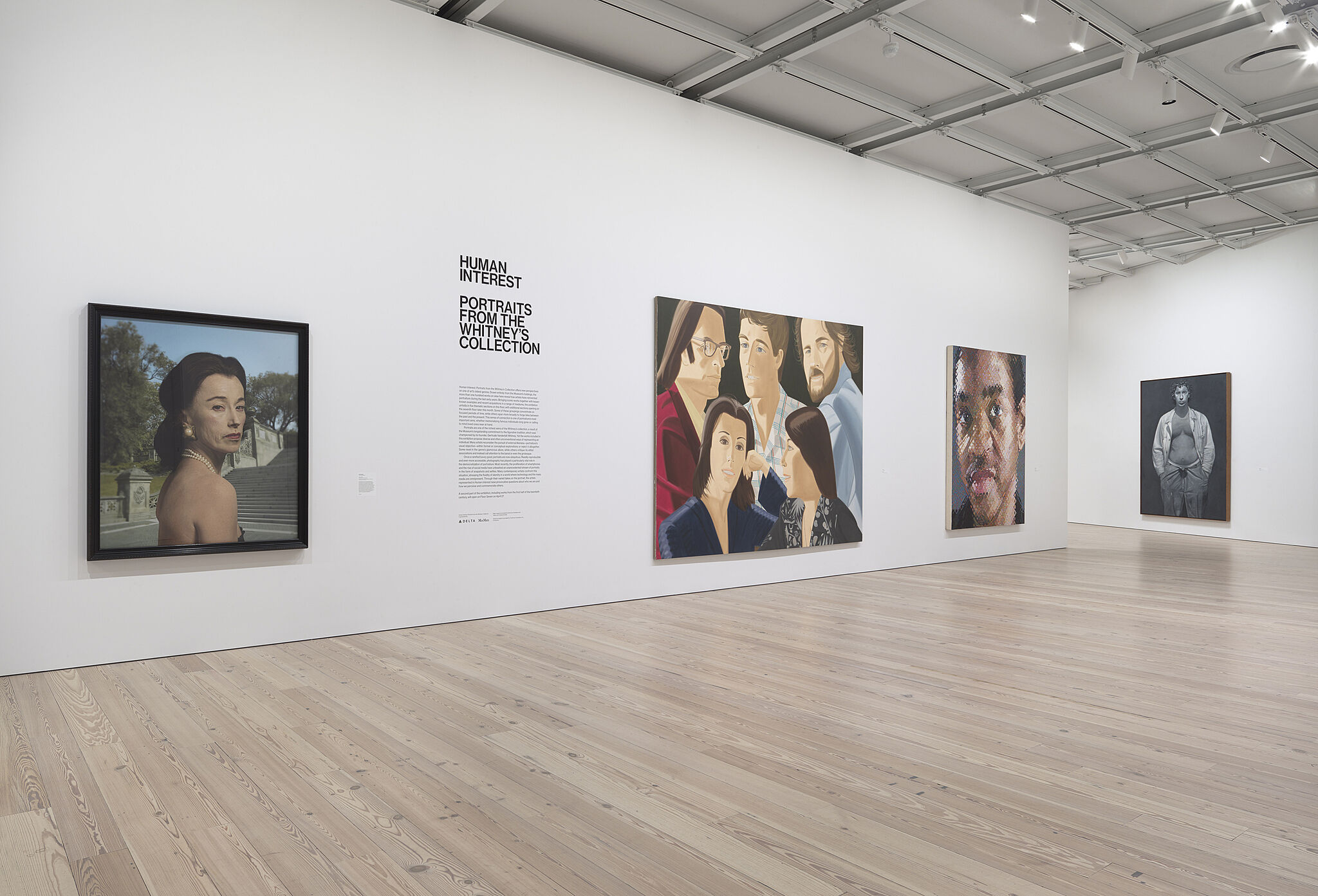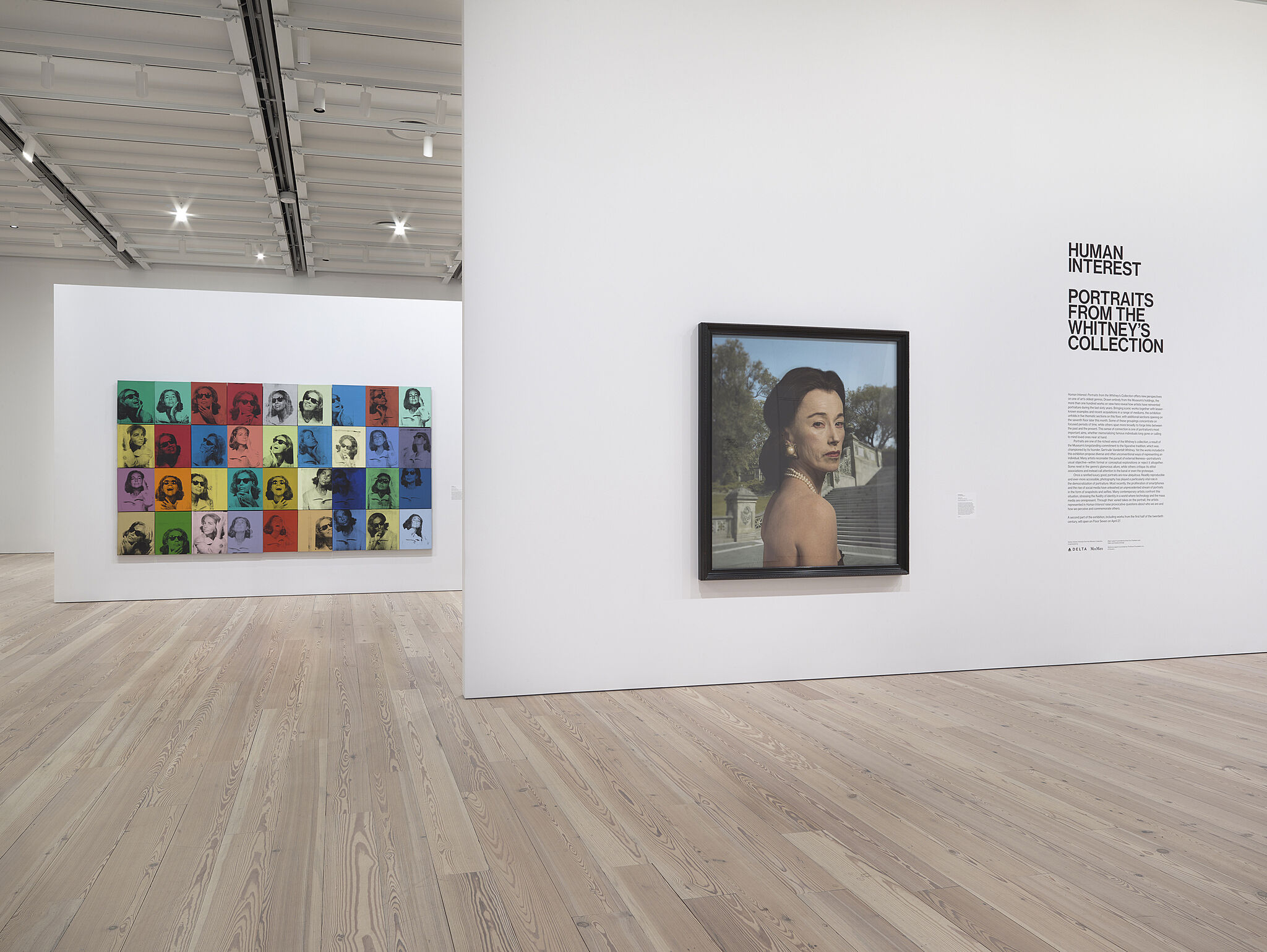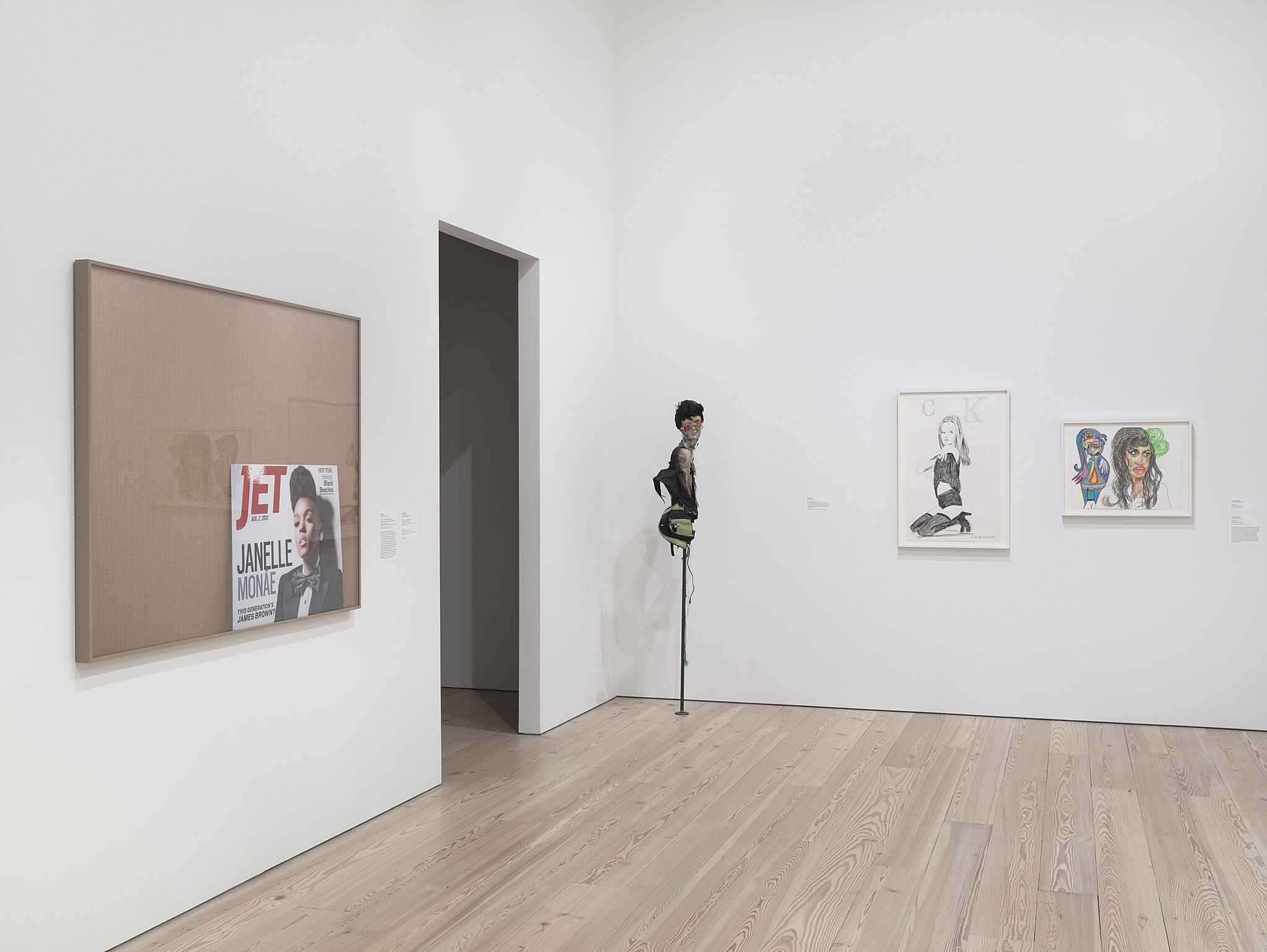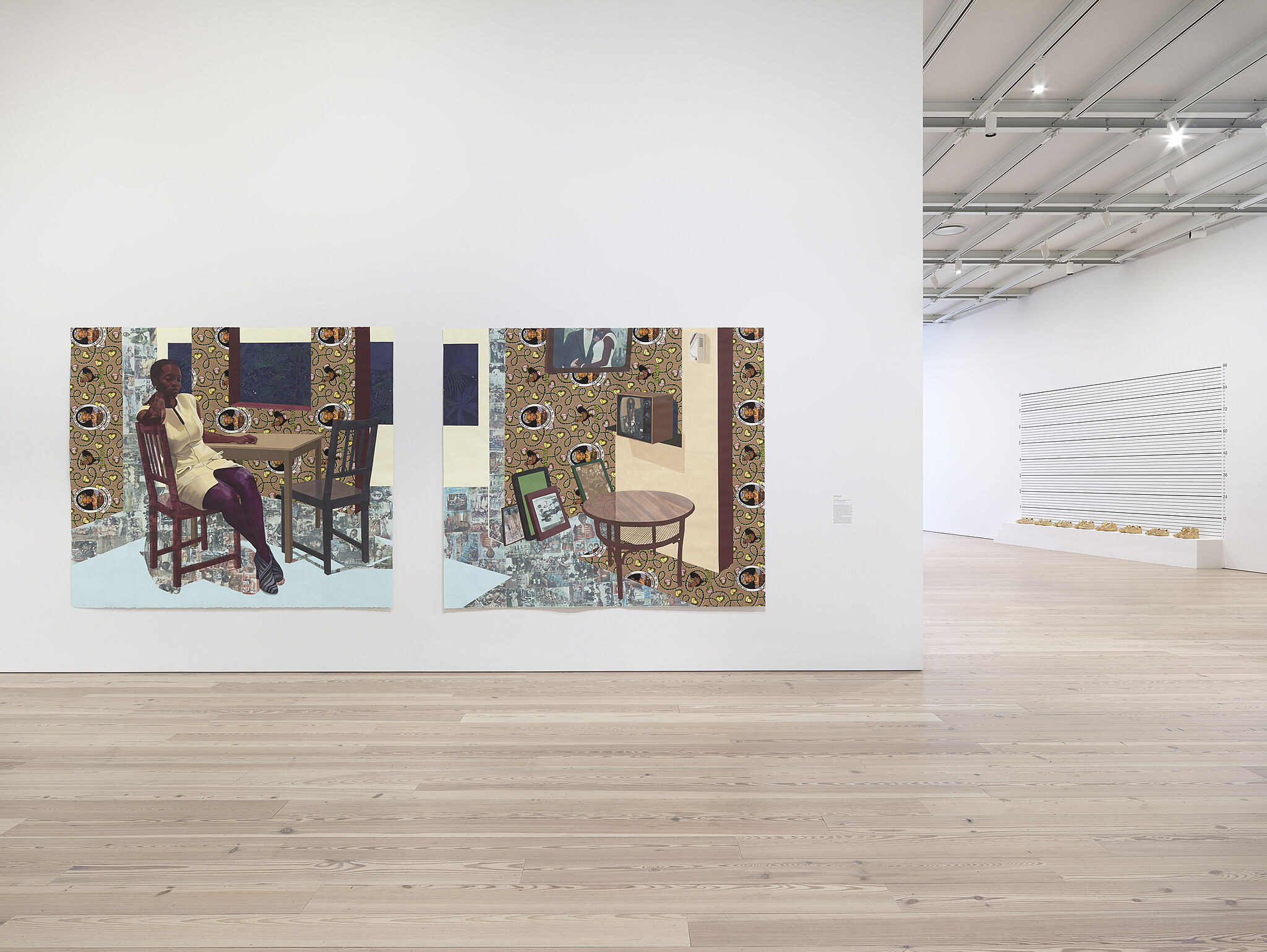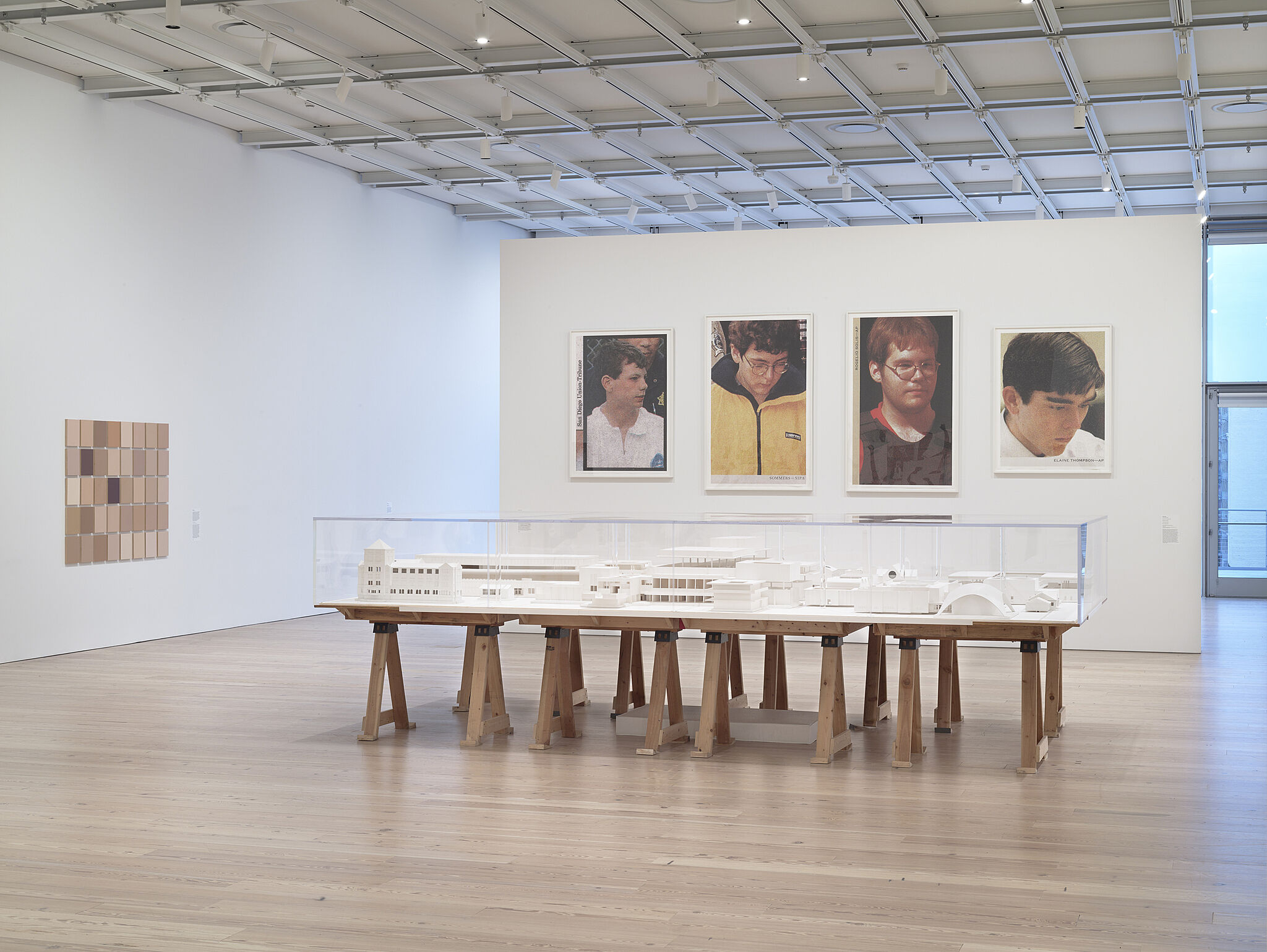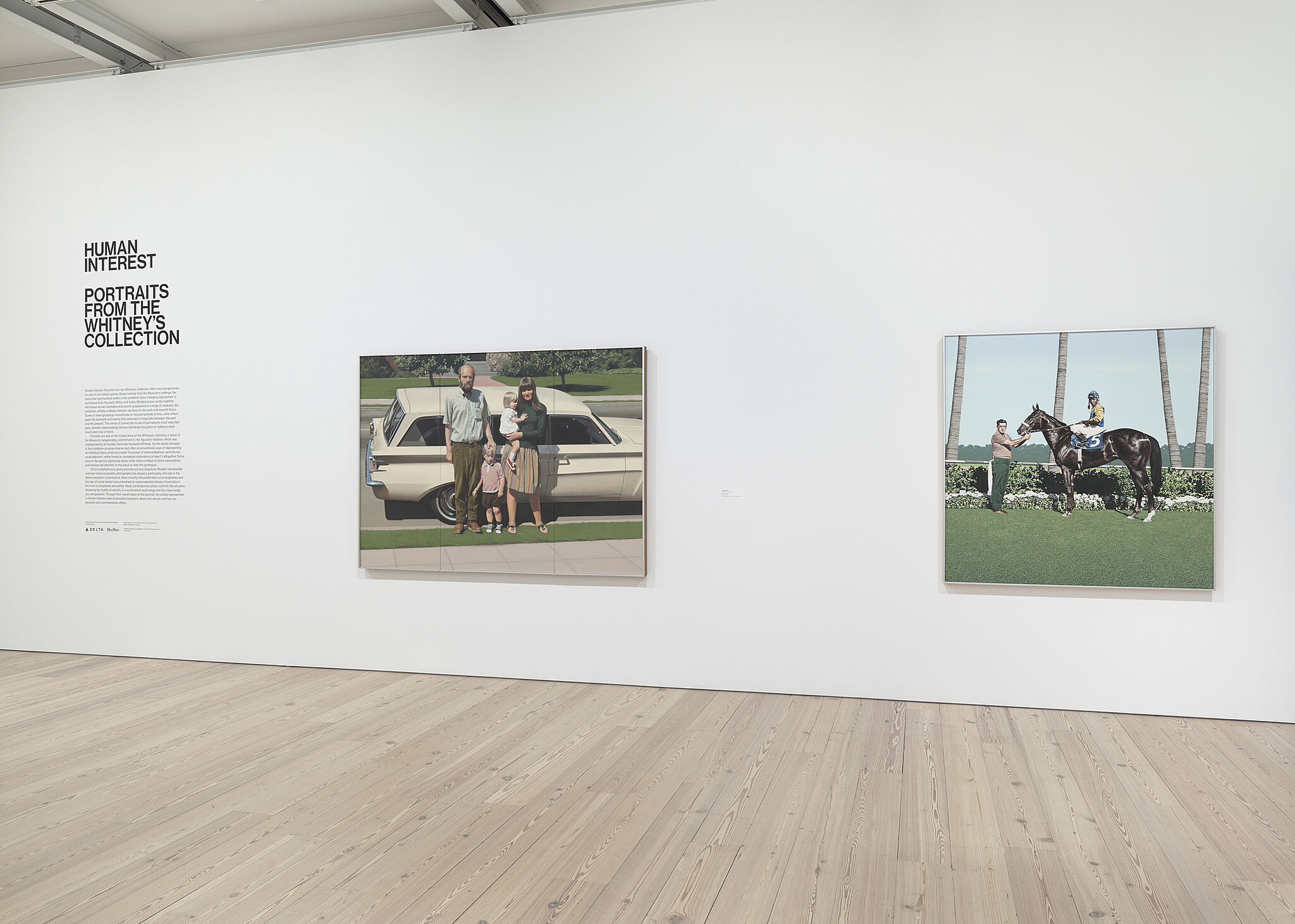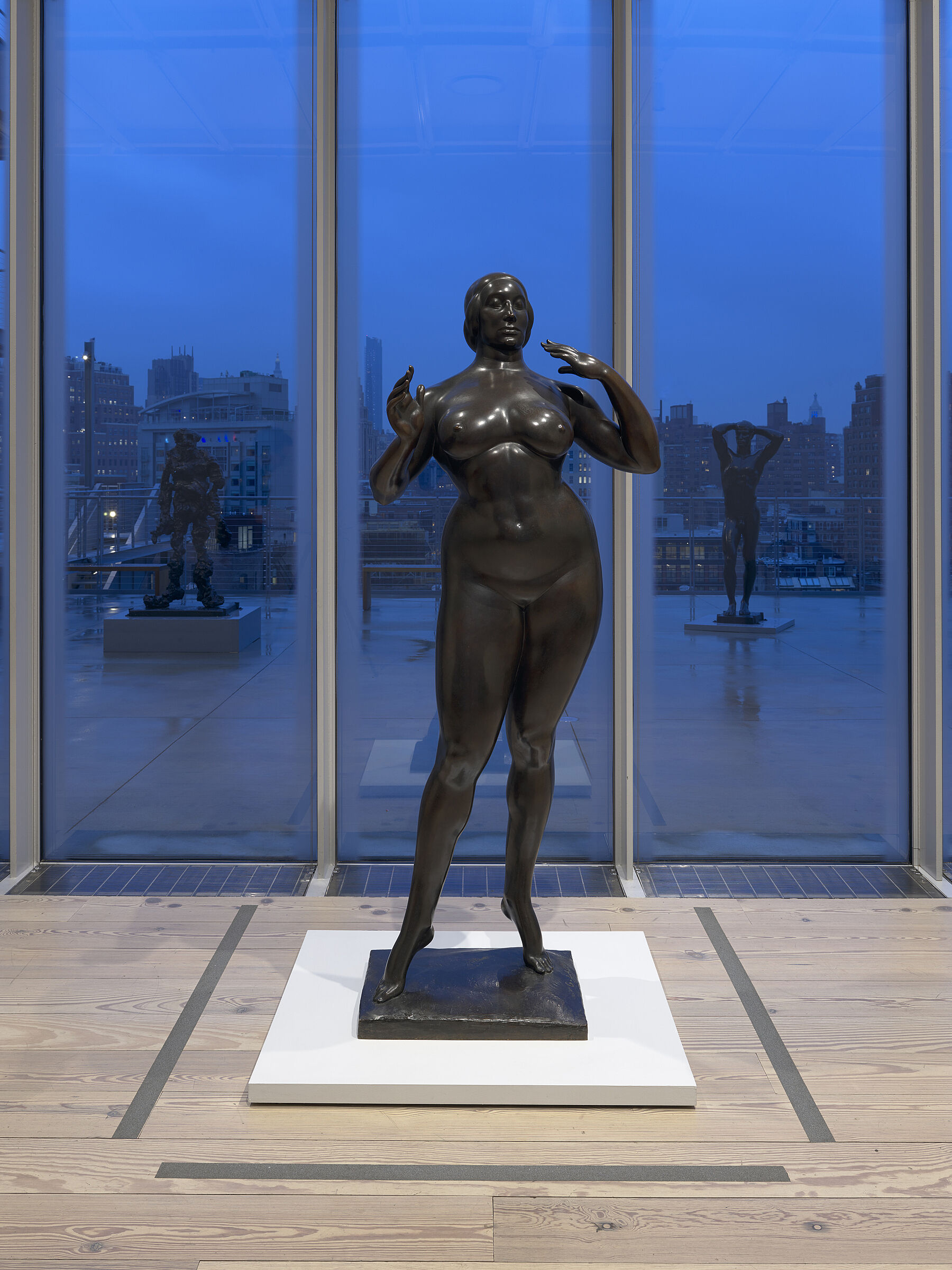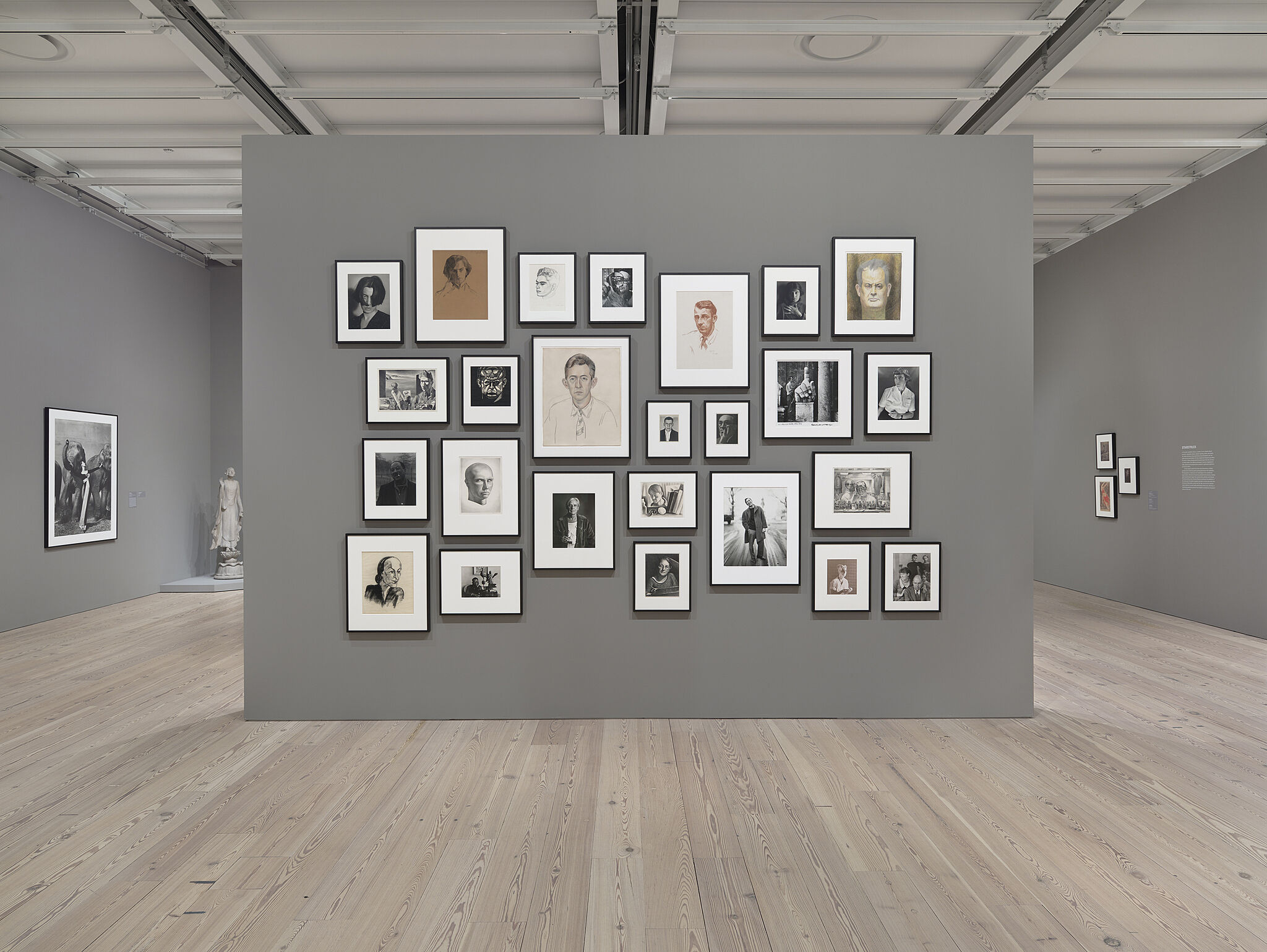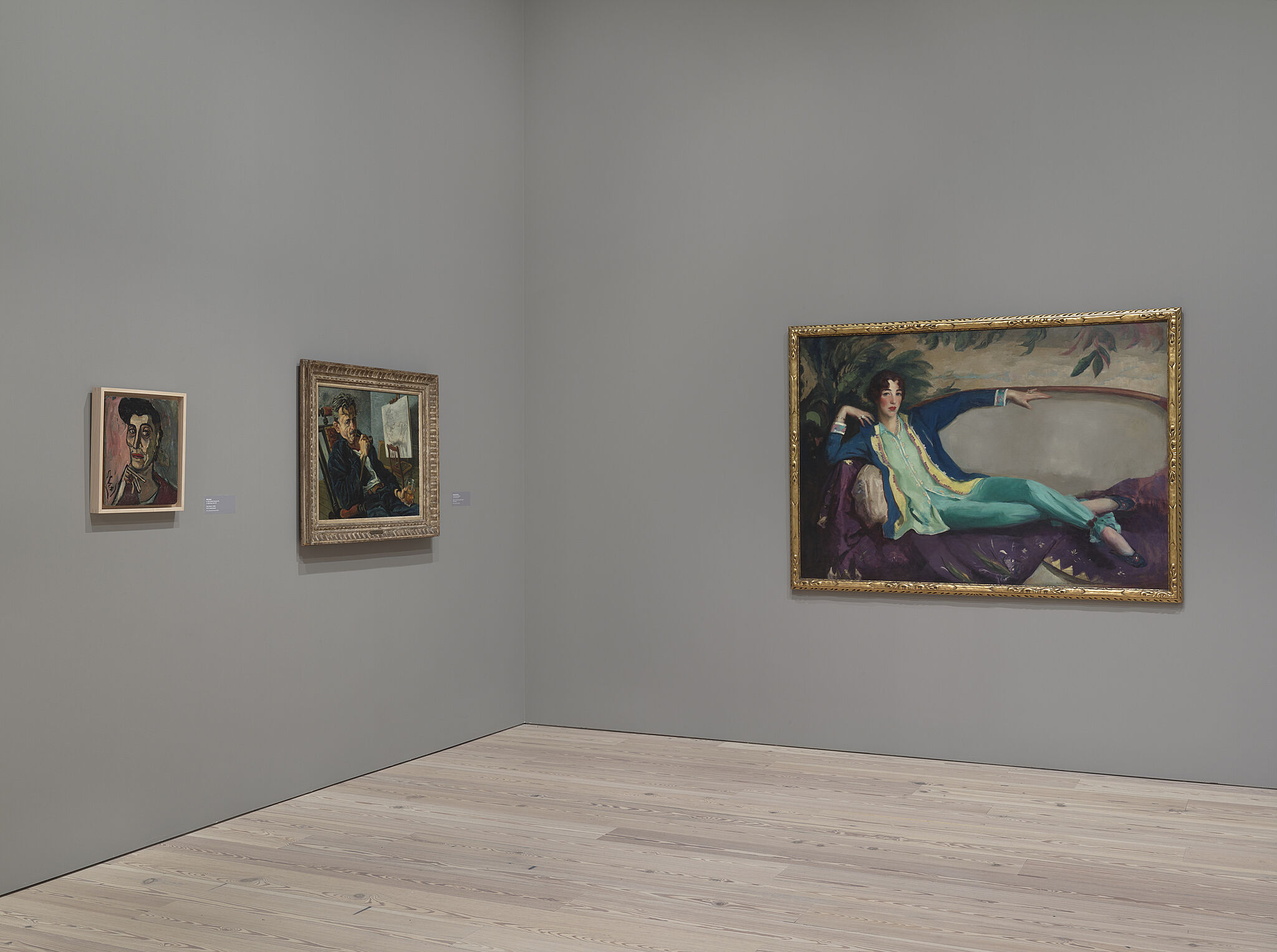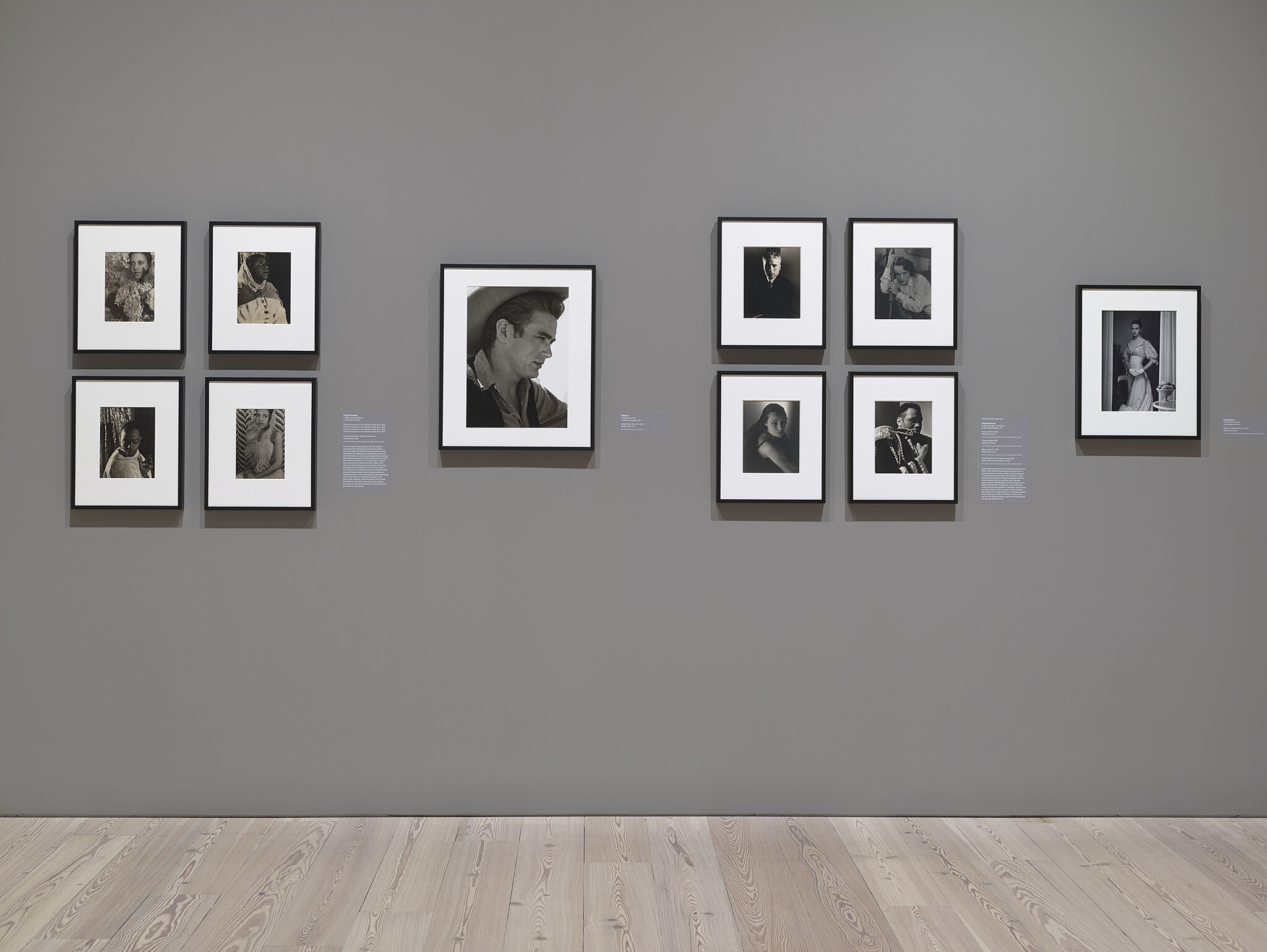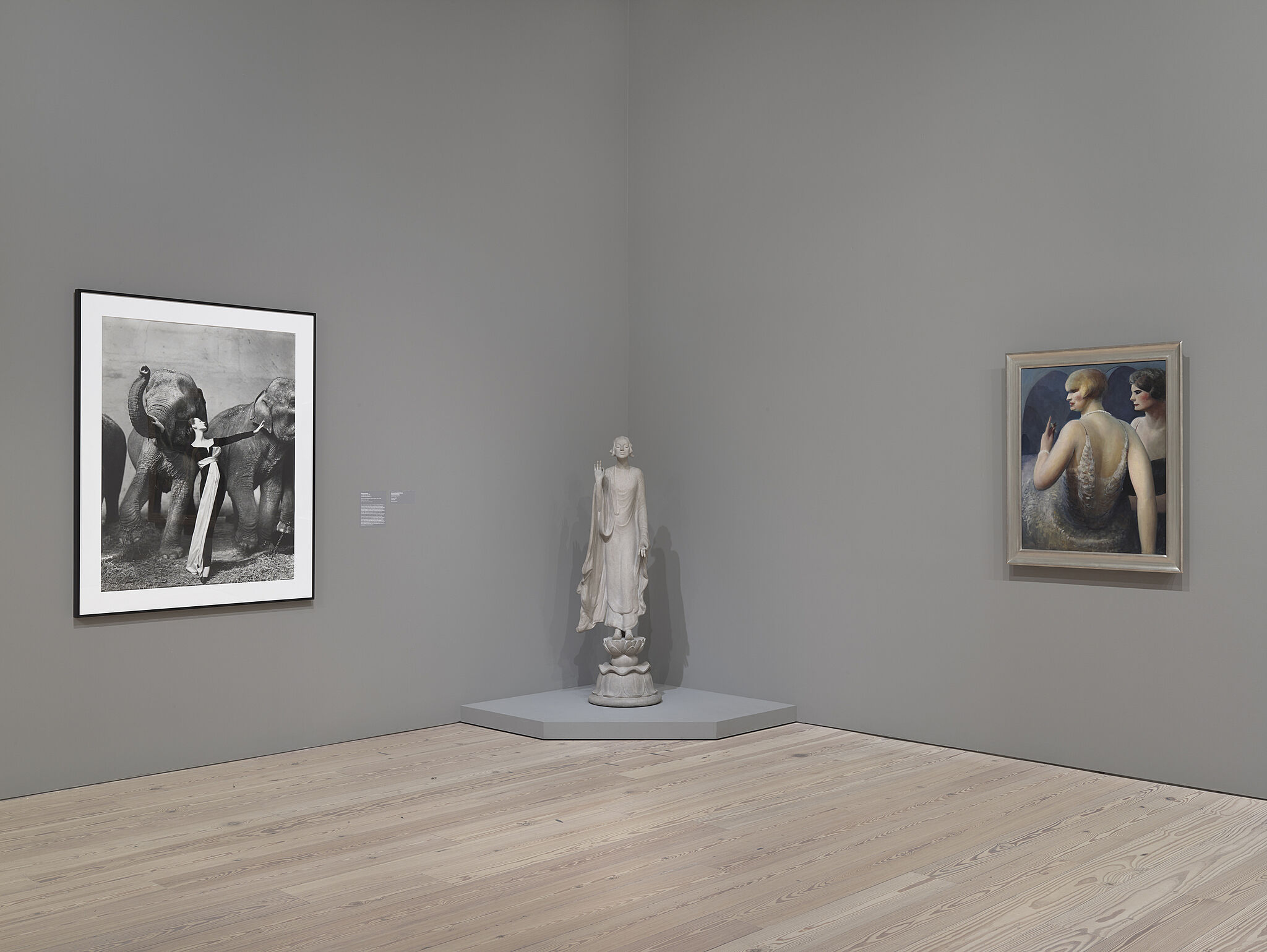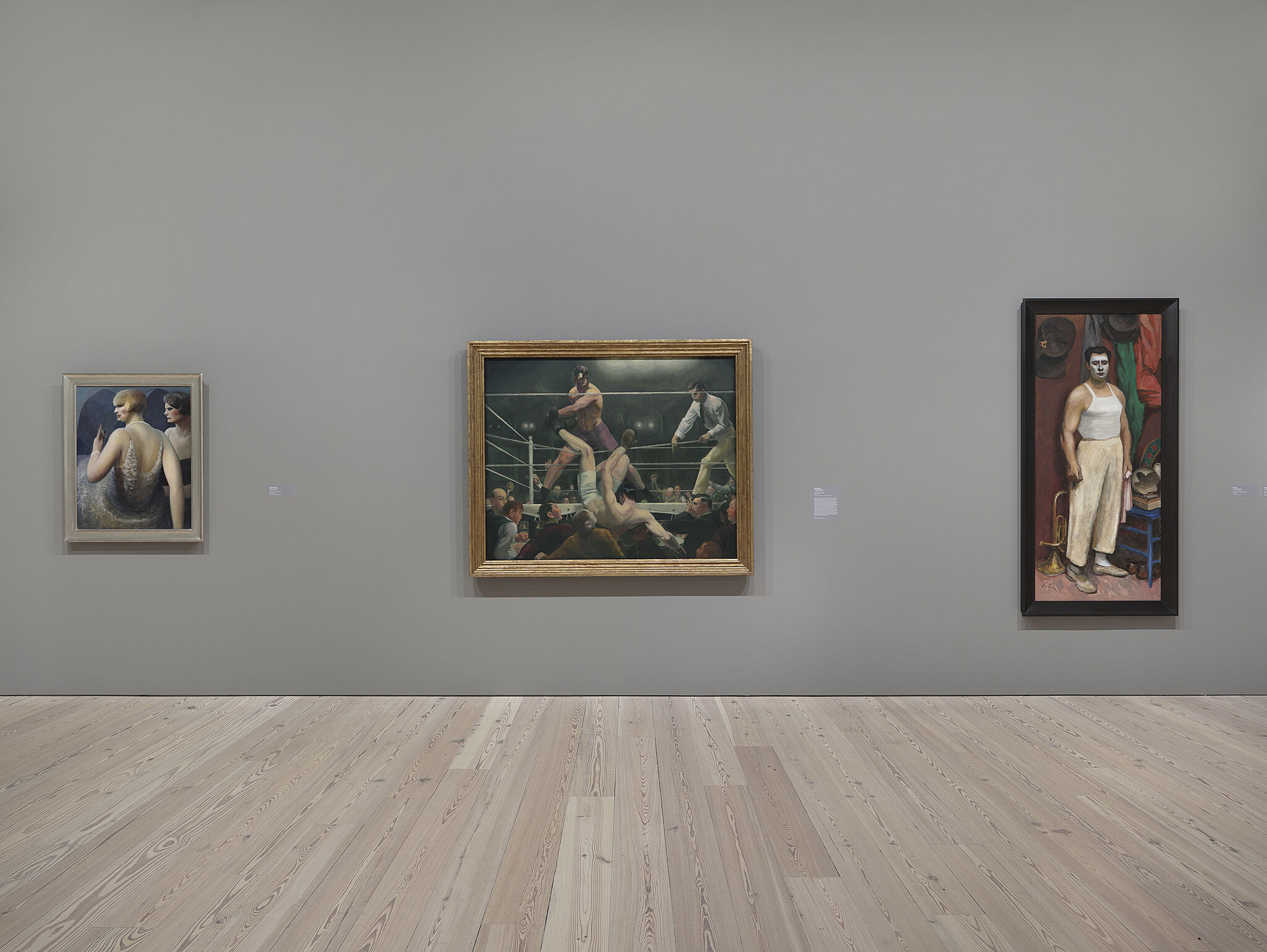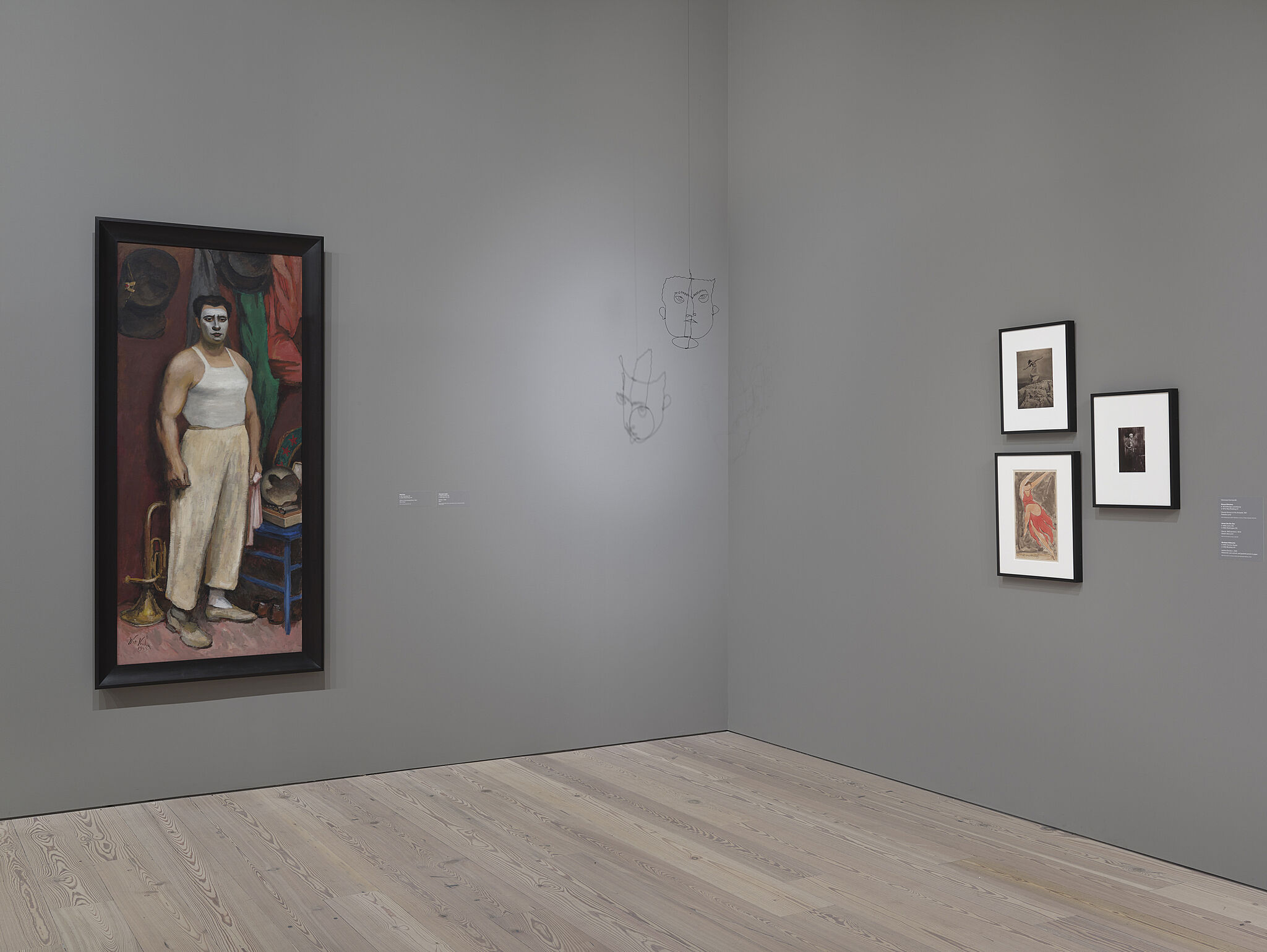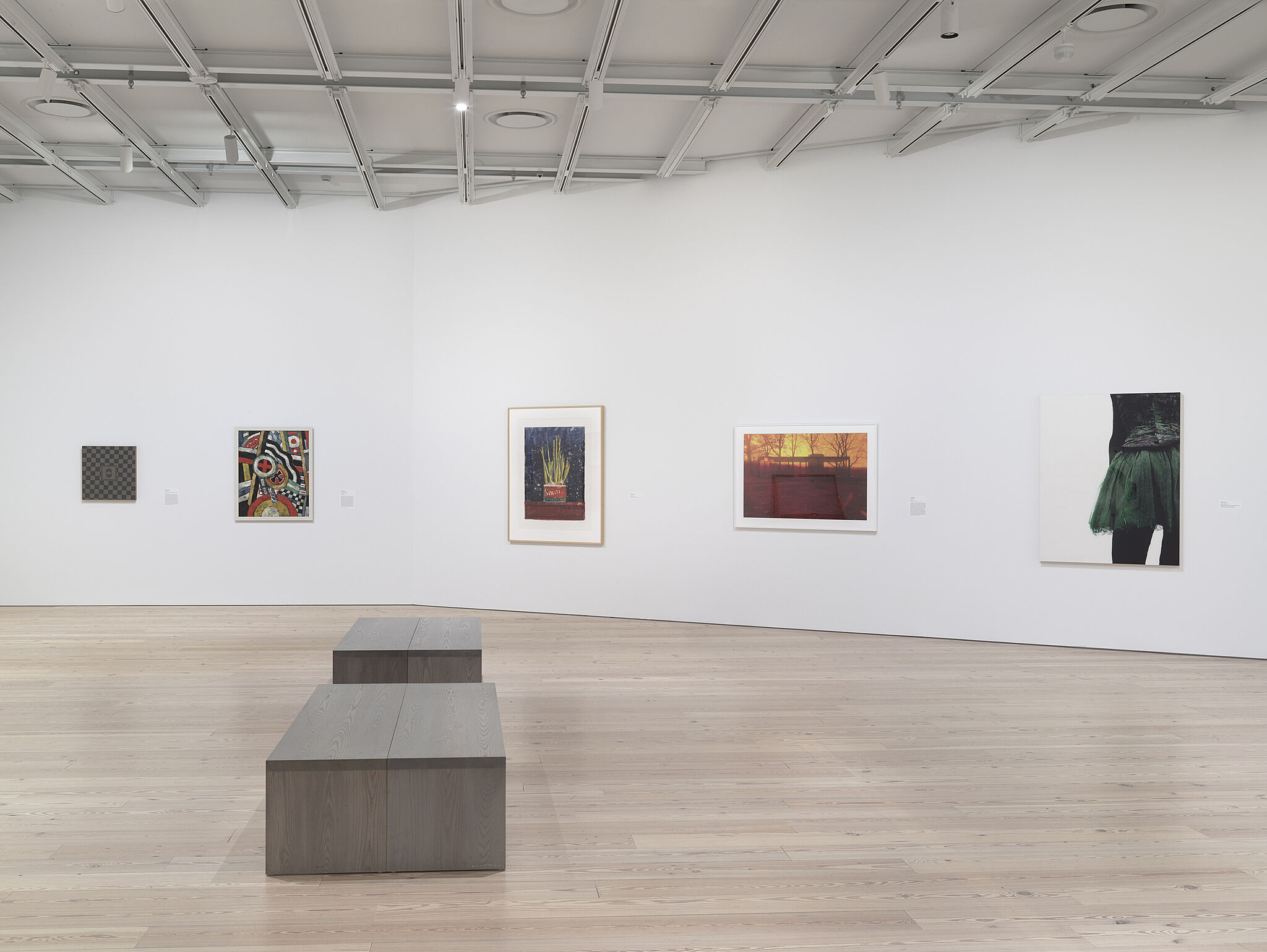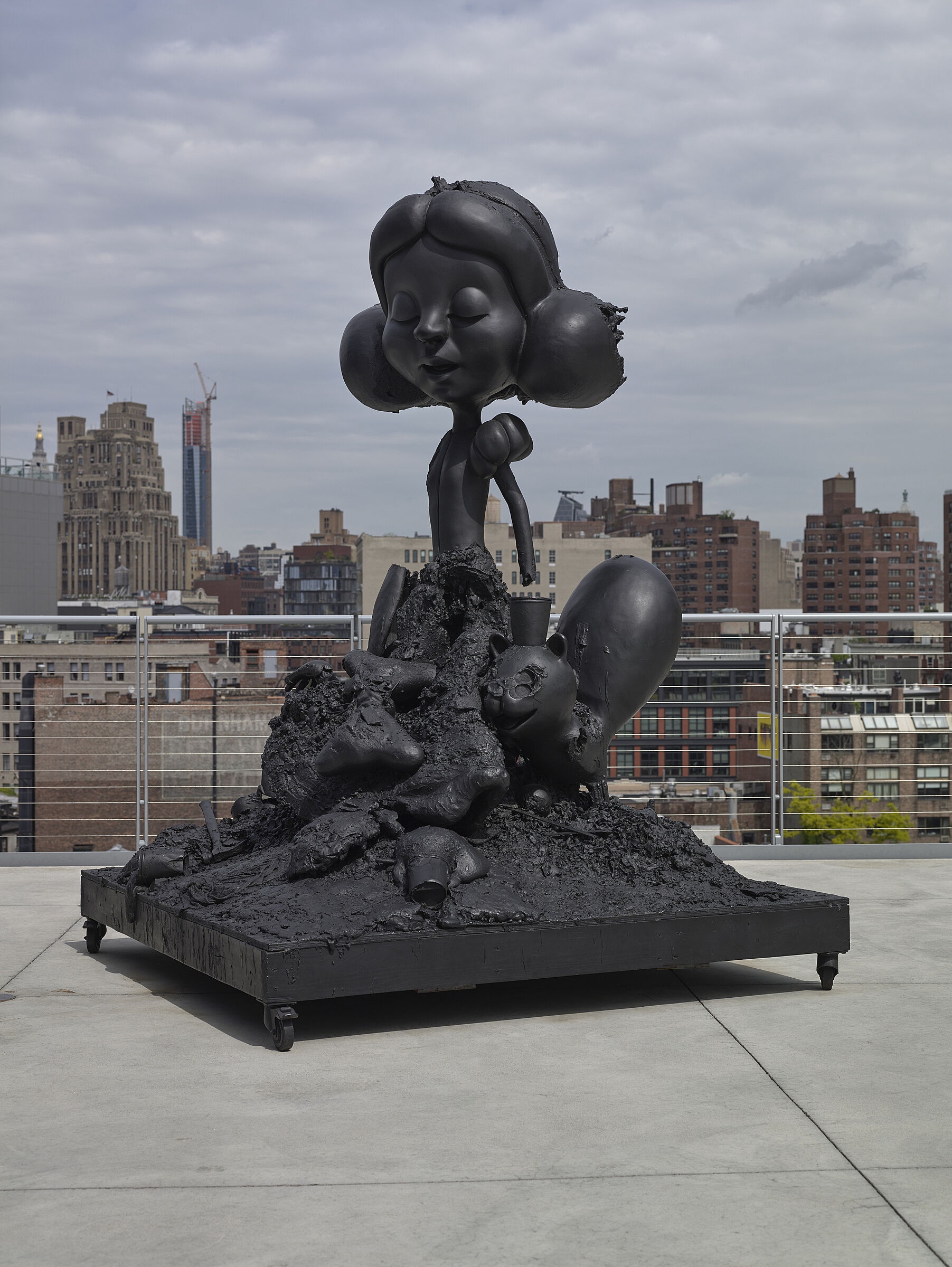Human Interest: Portraits from the Whitney’s Collection
Apr 2, 2016–Apr 2, 2017
Human Interest: Portraits from the Whitney’s Collection offers new perspectives on one of art’s oldest genres. Drawn entirely from the Museum’s holdings, the more than two hundred works in the exhibition show changing approaches to portraiture from the early 1900s until today. Bringing iconic works together with lesser-known examples and recent acquisitions in a range of mediums, the exhibition unfolds in eleven thematic sections on the sixth and seventh floors. Some of these groupings concentrate on focused periods of time, while others span the twentieth and twenty-first centuries to forge links between the past and the present. This sense of connection is one of portraiture’s most important aims, whether memorializing famous individuals long gone or calling to mind loved ones near at hand.
Portraits are one of the richest veins of the Whitney’s collection, a result of the Museum’s longstanding commitment to the figurative tradition, which was championed by its founder, Gertrude Vanderbilt Whitney. Yet the works included in this exhibition propose diverse and often unconventional ways of representing an individual. Many artists reconsider the pursuit of external likeness—portraiture’s usual objective—within formal or conceptual explorations or reject it altogether. Some revel in the genre’s glamorous allure, while others critique its elitist associations and instead call attention to the banal or even the grotesque.
Once a rarefied luxury good, portraits are now ubiquitous. Readily reproducible and ever-more accessible, photography has played a particularly vital role in the democratization of portraiture. Most recently, the proliferation of smartphones and the rise of social media have unleashed an unprecedented stream of portraits in the form of snapshots and selfies. Many contemporary artists confront this situation, stressing the fluidity of identity in a world where technology and the mass media are omnipresent. Through their varied takes on the portrait, the artists represented in Human Interest raise provocative questions about who we are and how we perceive and commemorate others.
Human Interest: Portraits from the Whitney’s Collection is curated by Dana Miller, Richard DeMartini Family Curator and Director of the Permanent Collection and Scott Rothkopf, Deputy Director for Programs and Nancy and Steve Crown Family Chief Curator with Mia Curran, Curatorial Assistant; Jennie Goldstein, Assistant Curator; and Sasha Nicholas, consulting curator.
Human Interest: Portraits from the Whitney’s Collection is sponsored by
Major support is provided by Anne Cox Chambers and Helen and Charles Schwab.
Generous support is provided by The Brown Foundation, Inc., of Houston.
Portraits Without People
2
Is likeness essential to portraiture? These works, spanning the past one hundred years, raise this question as they present alternate means for capturing an individual’s personality, values, and experiences. At the twentieth century’s outset, the rise of abstraction and advances in photography spurred many artists to devise new, non-figurative approaches to portraiture. In their paintings, American modernists such as Charles Demuth, Marsden Hartley, Georgia O’Keeffe, and Florine Stettheimer frequently adopted symbols—including abstract geometries, typographical characters, and natural forms—as surrogates for themselves and their closest companions.
Artists have continued to experiment with symbolic portraiture in the decades since World War II, whether hinting at private meanings by depicting intimate spaces and personal possessions or referencing themselves through the tools of their craft. When the face or the body does appear in the works featured here, it is shown at a remove, as a representation within a representation. Forgoing physical likeness in favor of allusion and enigma, all of these works expand the possibilities of what a portrait can be, while also acknowledging that the quest to depict others—and even ourselves—is elusive.
Below is a selection of works from Portraits Without People.
Artists
- Berenice Abbott
- Ivan Le Lorraine Albright
- Charles Henry Alston
- Eleanor Antin
- Diane Arbus
- Cory Arcangel
- David Armstrong
- Robert Arneson
- Asco
- Charles Atlas
- Alice Attie
- Richard Avedon
- Sid Avery
- Peggy Bacon
- Alex Bag
- Alvin Baltrop
- Jared Bark
- Tina Barney
- Leonard Baskin
- Jean-Michel Basquiat
- David Bates
- Cecilia Beaux
- Robert Bechtle
- Robert Beck
- George Bellows
- Billy Al Bengston
- Judith Bernstein
- Forrest Bess
- Dawoud Bey
- Ashley Bickerton
- Ilse Bing
- Isabel Bishop
- Blythe Bohnen
- Louise Bourgeois
- Hans Breder
- Paul Cadmus
- Alexander Calder
- Federico Castellón
- Elizabeth Catlett
- Talia Chetrit
- Leidy Churchman
- Chuck Close
- Anne Collier
- Howard Cook
- John Coplans
- Joseph Cornell
- Ralston Crawford
- Njideka Akunyili Crosby
- Imogen Cunningham
- Louise Dahl-Wolfe
- Allan D'Arcangelo
- Bruce Davidson
- Roy DeCarava
- Jay DeFeo
- Willem de Kooning
- Beauford Delaney
- Charles Demuth
- Agnes Denes
- Jimmy DeSana
- Philip-Lorca diCorcia
- Louis H. Draper
- Rosalyn Drexler
- Guy Pène Du Bois
- Mabel Dwight
- Harold Edgerton
- William Eggleston
- Nicole Eisenman
- Roe Ethridge
- Walker Evans
- Louis Faurer
- Andreas Feininger
- Larry Fink
- Audrey Flack
- Robert Frank
- LaToya Ruby Frazier
- Lee Friedlander
- Nan Goldin
- Jack Goldstein
- Arshile Gorky
- John D. Graham
- Katy Grannan
- Stephen Greene
- Timothy Greenfield-Sanders
- Renée Green
- Scott Grieger
- Nancy Grossman
- Susan Hall
- Duane Hanson
- K8 Hardy
- Lyle Ashton Harris
- Rachel Harrison
- Grace Hartigan
- Marsden Hartley
- David Hartt
- Kenneth Hartwell
- Barkley L. Hendricks
- Robert Henri
- Anthony Hernandez
- Leslie Hewitt
- Lewis Hine
- Edward Hopper
- Douglas Huebler
- Peter Hujar
- Jasper Johns
- Howard Kanovitz
- Deborah Kass
- Alex Katz
- Mike Kelley
- Mary Kelly
- Rockwell Kent
- Karen Kilimnik
- Byron Kim
- Robert Kinmont
- William Klein
- Josh Kline
- Walt Kuhn
- Gaston Lachaise
- Sean Landers
- Louise Lawler
- Deana Lawson
- Rico Lebrun
- Arthur Lee
- Saul Leiter
- Annette Lemieux
- Alfred Leslie
- Leon Levinstein
- Helen Levitt
- Jerome Liebling
- Glenn Ligon
- Kalup Linzy
- Robert Longo
- Louis Lozowick
- Sally Mann
- Man Ray
- Robert Mapplethorpe
- Marisol
- Kerry James Marshall
- Cynthia Maughan
- Paul McCarthy
- Ryan McGinley
- Richard McLean
- Susan Meiselas
- Ana Mendieta
- Joel Meyerowitz
- Toyo Miyatake
- Mark Morrisroe
- Vik Muniz
- Gerald Murphy
- Wangechi Mutu
- Billy Name
- Bruce Nauman
- Alice Neel
- Shirin Neshat
- Louise Nevelson
- Arnold Newman
- Dorothy Norman
- Georgia O'Keeffe
- Catherine Opie
- Alfonso Ossorio
- Tod Papageorge
- Gordon Parks
- Philip Pearlstein
- Irving Penn
- Elizabeth Peyton
- Jack Pierson
- Fairfield Porter
- Liliana Porter
- Richard Prince
- Yvonne Rainer
- Robert Rauschenberg
- Charles Ray
- Larry Rivers
- Martha Rosler
- Theodore Roszak
- Edward Ruscha
- Alison Saar
- Lucas Samaras
- Jacolby Satterwhite
- Peter Saul
- Morton Schamberg
- Julian Schnabel
- Collier Schorr
- Georges Schreiber
- Joan Semmel
- Jamel Shabazz
- Ben Shahn
- Jack Shear
- Charles Sheeler
- Cindy Sherman
- Paul Sietsema
- Gary Simmons
- Laurie Simmons
- Avery Singer
- Sylvia Sleigh
- John Sonsini
- Alec Soth
- Moses Soyer
- Raphael Soyer
- Edward Steichen
- Joseph Stella
- Albert Sterner
- Florine Stettheimer
- Rudolf Stingel
- John Storrs
- Paul Strand
- Sturtevant
- Henry Taylor
- Val Telberg
- Dox Thrash
- George Tooker
- Jerry N. Uelsmann
- Stewart Uoo
- James Van Der Zee
- Carl Van Vechten
- JoAnn Verburg
- David Vestal
- Abraham Walkowitz
- Andy Warhol
- Idelle Weber
- Weegee
- Carrie Mae Weems
- James Welling
- Edward Weston
- Gertrude Vanderbilt Whitney
- T. J. Wilcox
- John Wilde
- Hannah Wilke
- Martha Wilson
- Garry Winogrand
- Jonas Wood
- Francesca Woodman
- Andrea Zittel
Mobile guides
This audio guide highlights selected works in Human Interest: Portraits from the Whitney’s Collection, with commentary by students from PS 33 Chelsea Prep and Whitney Museum educator Melanie Adsit.
Explore works from this exhibition
in the Whitney's collection
View 381 works
In the News
“Astutely geared to the selfie age, it might well have been subtitled 'Americans Are Strange to Look At,' which, in the two-hundred and fifty images here, we sure are: funny-strange, beautiful-strange, crazy-strange, dangerous-strange, inscrutable-strange.”
—The New York Times
“In Conversation: Barkley L. Hendricks with Laila Pedro”
—The Brooklyn Rail
“This 8-Foot Candle Portrait Mesmerized Me”
—New York Magazine
"The Whitney's Extraordinary Human Interest Exhibit is the Ultimate Portrait Show"
—NJ.com
"The mixed media show, grouped by era or thematically, includes a variety of perspectives that challenge who we are and how we perceive and record those around us"
—Blouin Art Info
“A collection that proves that more than just the faces of people can constitute portraits.”
—Chelsea News
"[Human Interest] delves into the art form in an unprecedented way."
—InStyle
"The Whitney Museum’s wide-angle collection show Human Interest reminds us that the democratization of portraiture started more than a century ago, and encourages us to think more broadly about what is or isn’t a portrait."
—Artspace
"There are magnetic images everywhere."
—The New York Times

